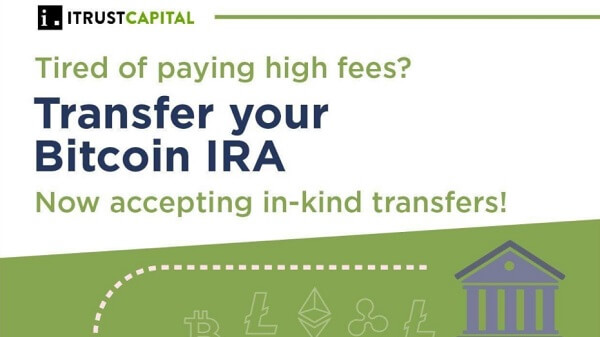
TLDR
Ethereum Open Interest hit an all-time high of $35.69 billion, indicating high speculative activity
ETH price crossed $2,700 for the first time since February, up 53% over the past month
U.S. spot Ethereum ETFs attracted $402 million in inflows over the past month
$123 billion of ETH sits near cost basis (0-20% profit band), creating volatility risk
Technical indicators suggest a potential “bull flag” pattern with possible upward momentum toward $3,000-$3,500
Ethereum has staged an impressive recovery in recent weeks, climbing above $2,700 for the first time since February after a challenging first quarter. The second-largest cryptocurrency is now trading around $2,670-$2,736, representing a remarkable 53% increase over the past month.
The rally comes amid a surge in trading activity. According to CoinGlass data, Ethereum Futures Open Interest has climbed to an all-time high of $35.69 billion, reflecting aggressive positioning by traders who anticipate continued upside.
This sharp rise in Open Interest throughout May has outpaced ETH’s price movement, suggesting growing leverage in the system. While this bullish sentiment can fuel rapid gains, it also increases Ethereum’s exposure to potential volatility.
Institutional interest appears to be a major driver behind Ethereum’s recent performance. U.S. spot Ethereum exchange-traded funds have attracted $402 million in inflows over the past month.
BlackRock’s iShares Ethereum Trust alone brought in $53 million in just 24 hours, pushing its cumulative inflows to $4.3 billion. This demonstrates growing institutional confidence in the cryptocurrency.
Several large-scale ETH purchases by institutions further highlight this trend. Abraxas Capital acquired over 350,000 Ethereum worth approximately $837 million between May 7 and May 21.
The company also removed 185,000 ETH from exchanges during a 44% price increase in early May, showing long-term conviction in the asset.
Market Structure Creates Volatility Risk
Despite the positive momentum, a concerning market structure has developed. According to Glassnode data, approximately $123 billion of ETH’s market cap is concentrated in the 0-20% profit band.
Most of this ETH was acquired between $2,300 and $2,500. This means even a modest pullback could push a significant portion of holders into unrealized losses.
The chart shows a swelling of this cohort in May, despite the broader rally. In effect, Ethereum’s climb has placed a vast amount of capital on a narrow ledge, exposing the market to swift sentiment reversals if price momentum breaks.
On the daily chart, Ethereum is displaying bullish momentum as it tests the upper Bollinger Band. The price remains above the $2,573 20-day simple moving average, which has served as a crucial support level for the rally.
ETH is forming a rising wedge pattern, which could indicate continuation if it breaks above the $2,800 resistance. The 50-day and 100-day EMAs, as well as the majority of other significant moving averages, are flashing buy signals.
Technical Indicators Point To Possible Breakout
Technical analysts from CryptoQuant have identified a potential “bull flag” pattern in Ethereum’s price action. This chart formation is frequently interpreted by traders as indicative of continuing upward momentum after a period of consolidation.
Ethereum’s price has oscillated within a defined range between $2,400 and $2,700 for nearly three weeks, creating favorable conditions for such a breakout.
Ethereum has maintained its position above the 200-day Exponential Moving Average (EMA), a technical indicator that has historically preceded significant price rallies when consistently respected. Based on this positioning, some analysts suggest a potential upward move toward a price range between $3,000 and $3,500 could materialize.
The Relative Strength Index (RSI) stands at 68.93-71.5, approaching overbought territory. This hints at possible exhaustion in upward momentum and suggests a brief pause or pullback may occur, particularly as the market approaches the psychological $2,800 and $3,000 levels.
Meanwhile, the MACD line remains above the signal line, reinforcing bullish sentiment, though the histogram is flattening, which could indicate fading momentum.
Some industry leaders are now advocating for the U.S. Securities and Exchange Commission to approve staking for Ethereum ETFs. SEC Commissioner Hester Peirce recently clarified that Ethereum’s proof-of-stake functions are not considered securities.
If ETF staking requests from companies like 21Shares receive approval, this could potentially drive more inflows into the asset.
Ethereum may retest support at $2,650 or the 20-day SMA at $2,573 if it cannot maintain above $2,700. However, a breakout above $2,800 could lead to $2,900 and beyond if momentum continues.
At the time of writing, Ethereum trades at approximately $2,670, having retraced slightly from its recent high above $2,700.






 Bitcoin
Bitcoin  Ethereum
Ethereum  Tether
Tether  XRP
XRP  USDC
USDC  Lido Staked Ether
Lido Staked Ether  TRON
TRON  Dogecoin
Dogecoin  Cardano
Cardano
Be the first to comment